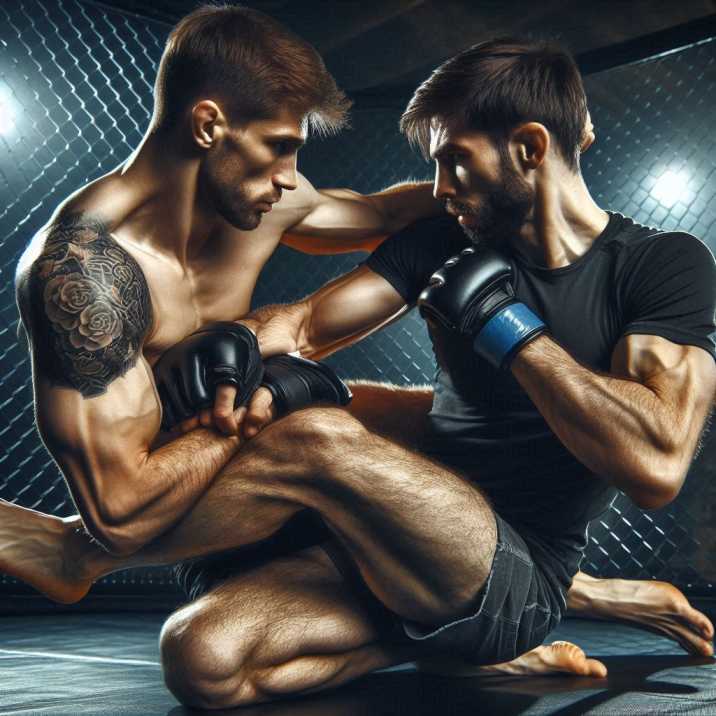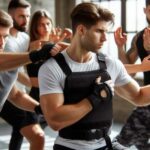Introduction
Table of Contents
In the realm of self-defense and combat sports, Krav Maga and Mixed Martial Arts (MMA) stand out as two prominent disciplines. Both have garnered massive followings and have their unique approaches, techniques, and philosophies. Whether you’re looking to enhance your self-defense skills, get in shape, or compete, understanding the differences and similarities between Krav Maga and MMA is crucial. In this article, we’ll dive deep into the world of Krav Maga vs MMA, comparing their histories, techniques, training methodologies, and practical applications. By the end, you’ll have a clear understanding of which martial art might be the best fit for your personal goals.

Table of Contents
- What is Krav Maga?
- What is MMA?
- Historical Backgrounds
- Training Methods
- Techniques and Strategies
- Practical Applications
- Fitness and Physical Benefits
- Mental and Emotional Benefits
- Choosing the Right Discipline for You
- FAQs
Krav Maga vs MMA
What is Krav Maga?
Krav Maga, which translates to “contact combat” in Hebrew, is a self-defense system developed for the Israel Defense Forces (IDF). Unlike traditional martial arts, Krav Maga focuses on real-world situations and efficient, brutal counter-attacks. It integrates techniques from boxing, wrestling, judo, and karate, but with an emphasis on survival and neutralizing threats quickly.
Key Characteristics of Krav Maga:
- Real-World Application: Techniques are designed to be used in real-life situations.
- No Rules: Emphasis on survival means that there are no rules or limitations in a life-threatening situation.
- Situational Awareness: Training includes awareness of surroundings and potential threats.
- Rapid Learning Curve: Techniques are straightforward and designed to be learned quickly.
What is MMA?
Mixed Martial Arts (MMA) is a full-contact combat sport that allows a wide variety of fighting techniques from different martial arts traditions. Competitors use striking, grappling, and ground fighting techniques, typically within a regulated environment such as the Ultimate Fighting Championship (UFC).
Key Characteristics of MMA:
- Diverse Techniques: Incorporates techniques from boxing, Muay Thai, Brazilian Jiu-Jitsu, wrestling, and more.
- Competitive Sport: Governed by rules and regulations to ensure fair competition.
- Physical Conditioning: High emphasis on physical fitness, strength, and endurance.
- Skill Integration: Fighters must be proficient in both striking and grappling.
Historical Backgrounds
Krav Maga:
Krav Maga was developed in the 1930s by Imi Lichtenfeld, a Hungarian-Israeli martial artist. Lichtenfeld’s experiences defending the Jewish quarter from fascist groups in Bratislava led him to develop techniques that were both practical and effective in street fighting. After immigrating to Israel, he began teaching his methods to the IDF, which eventually evolved into the modern Krav Maga system.
MMA:
MMA’s roots can be traced back to the ancient Olympic sport of Pankration, a no-holds-barred combat sport. However, modern MMA was popularized in the early 1990s with the inception of the UFC. The aim was to determine the most effective martial art in a real fight. Over time, fighters began to cross-train in multiple disciplines, leading to the well-rounded fighters we see today.
Training Methods
Krav Maga Training:
Krav Maga training is intense and realistic, often simulating real-life scenarios. Training sessions typically include:
- Striking Drills: Punches, kicks, elbows, and knee strikes.
- Defense Techniques: Against common attacks like chokes, grabs, and weapons.
- Stress Drills: Simulating high-stress scenarios to build mental resilience.
- Scenario Training: Practicing techniques in various environments and situations.
MMA Training:
MMA training is comprehensive and involves:
- Striking: Techniques from boxing, kickboxing, and Muay Thai.
- Grappling: Techniques from Brazilian Jiu-Jitsu, wrestling, and judo.
- Conditioning: Strength, endurance, and cardiovascular training.
- Sparring: Live practice with opponents to apply techniques in real-time.
Techniques and Strategies
Krav Maga Techniques:
Krav Maga techniques are designed for efficiency and effectiveness in real-world situations.
- Strikes: Emphasis on vulnerable areas like the eyes, throat, and groin.
- Defenses: Against common attacks, including chokes, bear hugs, and knife threats.
- Transitions: Quickly moving from defense to offense.
- Weapon Disarms: Techniques to neutralize armed attackers.
MMA Techniques:
MMA fighters must be proficient in both striking and grappling.
- Striking: Combines punches, kicks, elbows, and knees.
- Grappling: Includes takedowns, submissions, and ground control.
- Transitions: Seamlessly moving between striking and grappling.
- Defense: Techniques to defend against strikes and grappling attacks.
Practical Applications
Krav Maga:
Krav Maga is highly effective for self-defense due to its focus on real-world scenarios and no-rules approach. It’s used by military and law enforcement agencies worldwide. Practitioners are trained to neutralize threats quickly and escape dangerous situations.
MMA:
MMA is primarily a sport, but its techniques are highly effective in one-on-one combat situations. The diverse skill set of an MMA fighter makes them adaptable to various fighting scenarios. However, the sport’s rules and regulations limit some of the more brutal techniques used in Krav Maga.
Fitness and Physical Benefits
Krav Maga:
- Cardiovascular Fitness: High-intensity training improves heart health.
- Strength: Techniques require significant strength, improving muscle tone.
- Flexibility: Drills improve flexibility and range of motion.
- Coordination: Complex movements enhance coordination and balance.
MMA:
- Endurance: Training sessions are long and intense, boosting stamina.
- Strength: Strength training is integral to MMA, enhancing muscle mass.
- Agility: Quick movements and transitions improve agility.
- Overall Fitness: Comprehensive training improves overall physical health.
Mental and Emotional Benefits
Krav Maga:
- Confidence: Knowing self-defense techniques boosts self-confidence.
- Stress Relief: Intense workouts release endorphins, reducing stress.
- Mental Resilience: Training in high-stress scenarios builds mental toughness.
- Situational Awareness: Enhanced awareness can improve personal safety.
MMA:
- Discipline: Rigorous training schedules foster discipline.
- Focus: Learning and executing complex techniques improve focus.
- Camaraderie: Training with a team builds strong social connections.
- Stress Relief: Physical exertion and competition release pent-up energy.
Choosing the Right Discipline for You
Choosing between Krav Maga and MMA depends on your personal goals and preferences.
Consider Krav Maga if you:
- Want practical self-defense skills.
- Are looking for a quick learning curve.
- Prefer a no-rules approach to combat.
- Want to improve situational awareness.
Consider MMA if you:
- Are interested in competing in combat sports.
- Want a well-rounded skill set in both striking and grappling.
- Enjoy the physical and mental challenges of rigorous training.
- Are looking to improve overall fitness and conditioning.
Conclusion
Krav Maga and MMA are both highly effective martial arts with unique approaches, techniques, and benefits. Whether you’re looking for practical self-defense skills, a competitive sport, or a way to improve your fitness and mental resilience, both disciplines have something to offer. By understanding the differences and similarities between Krav Maga and MMA, you can make an informed decision about which martial art is the best fit for your personal goals.
FAQs
Which is better for self-defense, Krav Maga or MMA?
Krav Maga is generally considered more effective for self-defense due to its focus on real-world scenarios and no-rules approach.
Can I train in both Krav Maga and MMA?
Yes, many practitioners cross-train in multiple disciplines to gain a broader skill set.
How long does it take to become proficient in Krav Maga?
The learning curve for Krav Maga is relatively short, and many people feel confident in their skills after a few months of consistent training.
Is MMA training safe?
While MMA training can be intense, reputable gyms prioritize safety and proper technique to minimize the risk of injury.
Do I need to be in shape to start training in Krav Maga or MMA?
No, both disciplines can be adapted to suit any fitness level, and training will improve your fitness over time.


